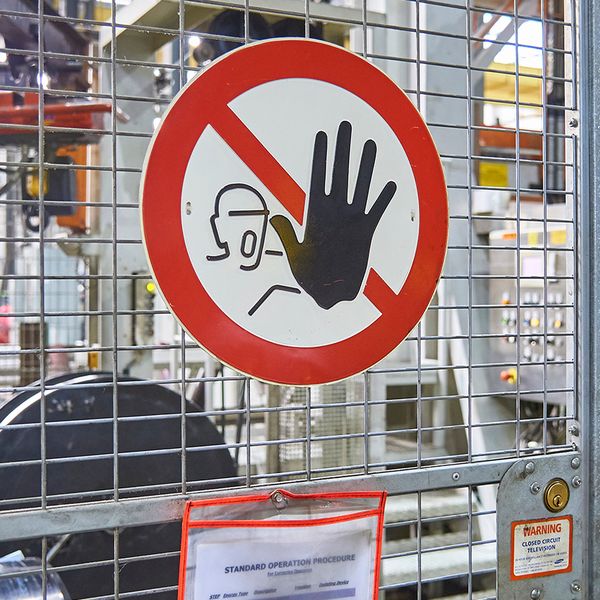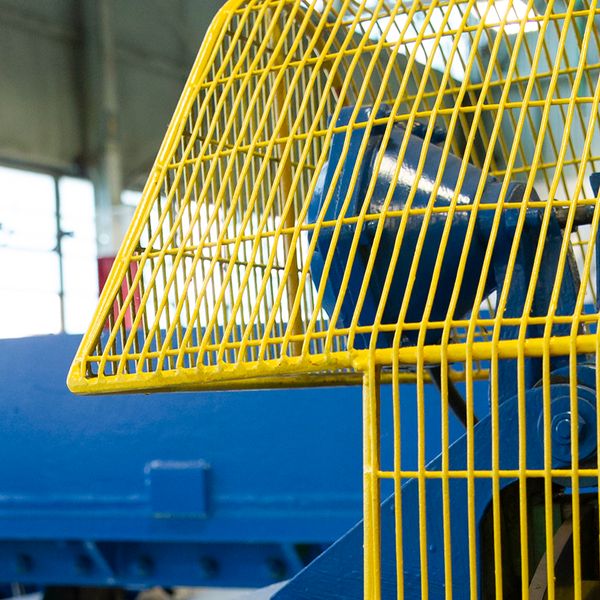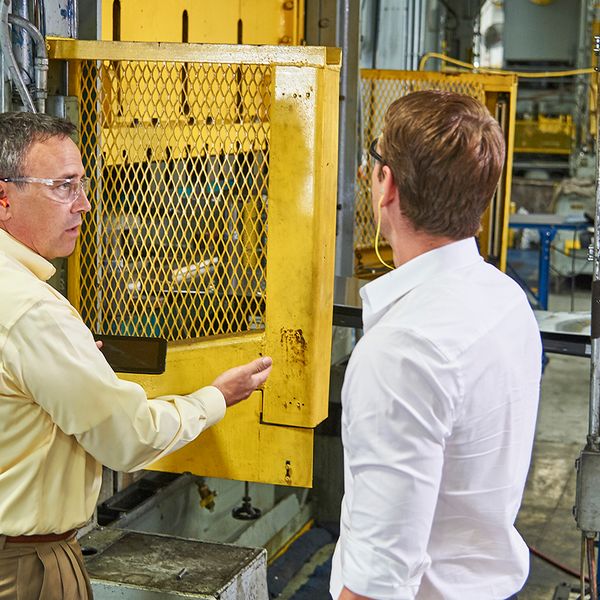Machine hazards that require guarding
Machine guards protect the operator (as well as other workers in the area) from hazards created by nip points, rotating parts, flying chips, and sparks. Most machines present hazards, and the hazard area must be guarded.
A variety of motions and actions create hazards. The types of motions and actions below are common to nearly all machines, but in differing combinations. Recognizing them is the first step toward protecting workers.
The basic types of hazardous motions and actions include:
- Rotating motion. Even slowly rotating shafts can grip hair or clothing. Rotating mechanisms include cams, flywheels, shaft ends, spindles, and horizontal or vertical shafts. The danger increases when bolts, abrasions, or other projections are exposed on rotating parts.
- In-running nip point. Rotating parts in contact (or in close proximity) create nip points, such as stock fed between two rolls, or the point of contact between a power transmission belt and its pulley. Nip points can also occur between rotating and fixed parts. Examples are spoked flywheels or the space between an abrasive wheel and an incorrectly adjusted work rest.
- Reciprocating motions. During a back-and-forth or up-and-down motion, a worker may be struck by or caught between a moving and a stationary part.
- Transverse motion. Movement in a straight, continuous line creates a hazard because a worker may be struck or caught in a pinch or shear point by the moving part.
The above motions are used to perform certain actions, such as the following:
- Cutting action may involve rotating, reciprocating, or transverse motion. Examples include various types of saws, boring and drilling machines, lathes, or milling machines.
- Punching action results when power is applied to a slide (ram) for the purpose of blanking, drawing, or stamping metal or other materials.
- Shearing action involves applying power to a slide or knife in order to trim or shear metal or other materials.
- Bending action results when power is applied to a slide in order to draw or stamp metal or other materials. Example equipment includes power presses, press brakes, and tubing benders.
Most machines present one or more of the above hazards, but effective guards may differ for each type of machine. Understanding the motions and actions that create hazards is an important step to protecting employees.
Potential issues
When a new machine is purchased, it might not come with an appropriate guard. Manufacturers don’t always provide guards, but the employer is still responsible for protecting employees from hazardous motions. If the machine creates a hazard (and most do), then a guard may need to be built or purchased separately.
In some cases, employees might remove a guard because it interferes with their ability to perform a specific task with the machine. In that case, a new or different type of guard may be needed to provide protection during that task. Do not allow workers to operate machines without a proper guard in place.
If an employee is required to remove a guard for service or maintenance, the employer will usually need to follow lockout/tagout procedures for the machine.


















































